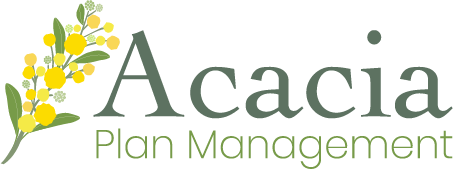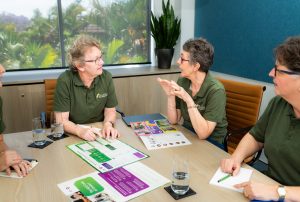If you have a child who is a year 12 student ending their schooling journey, they are likely to be making some big decisions about their future and next steps. This can be a positive time for some and for others, they may be feeling quite anxious. School Leaver Employment Supports (SLES) aims to make the transition from school to employment as smooth as possible for young people with disability and prepare them for the workforce.
SLES is a National Disability Insurance Scheme (NDIS) funded support. It’s designed to assist young people find meaningful employment once they leave school by building their skills, independence, and confidence.
What is SLES?
School Leaver Employment Supports is available for eligible Year 12 school leavers with disabilities under the National Disability Insurance Scheme (NDIS). If you have a year 12 student with a disability, they may be eligible for either Disability Employment Services (DES) or SLES, depending on how ready they are to transition from school to work.
These personalised supports offer lots of flexibility, allowing young people to create their own, unique pathway to employment based on their situation, skills and support needs. SLES is more than simply helping someone find a job. It’s about developing the foundations a young person will need to engage with employers now and into their future and building their capacity to live an independent life.
While SLES supports are tailored to the individual’s situation, support needs and employment goals, some skills that it can help develop include:
- Communicating in social and workplace situations
- Computer literacy
- Accounting and basic money management
- Resume writing and interview skills
- Strategies to find suitable job opportunities
- Working in a team
- Understanding workplace culture
- Time management
- Employee Rights and Responsibilities
Who is eligible for SLES?
SLES is available to NDIS participants who are preparing to leave or have recently left school and would like extra support transitioning to a life of working and understanding what it means to be an employee.
While these supports are usually targeted at year 12 students, anyone who’s legally old enough to leave school can access them. This is usually around year 10, but this varies depending on which state or territory you’re living in. In most instances, maximum age for SLES eligibility is 22.
How does SLES funding work?
SLES is included in NDIS support category 10 funding, Finding and Keeping a Job.
The funding is an annual allocation of approximately $22,000 for a maximum of two years. It can be spent throughout the year on relevant supports.
SLES service providers and participants will need to agree on a schedule of activities for the year and a total price. This should be captured in a service agreement to understand both party’s responsibilities and avoid any possible misunderstandings.
Who provides SLES supports?
There are many providers that deliver SLES supports. Some cover a wide range of skills designed to get people ready for work, while others specialise in a key area; for example, travelling to and from work.
Participants can use their SLES funding to engage with multiple service providers, allowing them to pick and mix the ones that are most suited to them and they feel can support them in achieving their employment and independence goals.
SLES is often paired with support coordination, as it involves creating a program of supports that will work together towards an overall employment goal. Support coordinators work closely with participants to put together a tailored SLES package that’s right for them and then help them select and connect with the best providers.
What’s the difference between SLES and DES?
If you are assessed as being able to work eight hours or more per week within the next two years, you will most likely be registered to DES to help you find a job. DES supports someone with a disability to get ready to look for a job, find a job and keep a job and are generally more ready for employment than those in SLES. DES participants who are in Year 12 can access DES ESL (Eligible School Leaver).
If you are assessed as needing more support through capacity building exercises to be able to work eight hours per week, you may be eligible for SLES to support your transition from school to work.
SLES is a NDIS-funded individualised service for up to two years and may include supports to build your confidence, independent living and vocational skills. Over this time, SLES prepares participants to be ready for DES and ultimately for work.
There are some similarities between SLES and DES (Disability Employment Services), as both are focused on creating pathways to employment. DES can be thought of as the next step on that journey, for those who are ready to enter the workforce, but still need some support finding and keeping a job. It’s available to anyone with a disability or health condition, even if they’re not an NDIS participant, and there are no age limits.
A key goal of SLES is to build the capacity of participants so they’re ready to transition to DES.
For more information about leaving school, visit the NDIS website.





